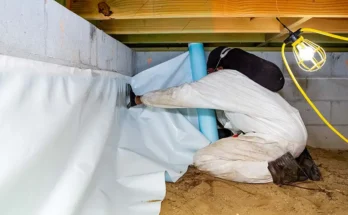Pets, much like humans, are susceptible to experiencing anxiety. Whether it is the rumble of thunderstorms or the separation from their beloved owners, a myriad of triggers can induce stress and anxious behaviors in our furry companions. As responsible pet guardians, it becomes imperative for us to identify signs of anxiety and proactively take measures to instill calmness and security in them. Here this article presents five effective strategies to alleviate anxiety in your pets:
Establishing a Safe Haven
Similar to humans seeking solace in familiar environments during times of distress, pets, too, crave comfort in their surroundings. Designate a tranquil and snug corner within your home where your pet can seek refuge when feeling overwhelmed. This area should be isolated from disruptive noises and furnished with their preferred toys, blankets, and bedding.
Whether it is a cozy crate or a secluded nook, encourage your pet to utilize this sanctuary by rewarding voluntary retreats with treats or praise. Over time, they will associate this area with safety and reassurance, providing a sanctuary during anxious episodes. Enhance the soothing ambiance of their haven by incorporating soft lighting or calming music.
Establishing a Routine
Consistency and predictability are pivotal in mitigating anxiety in pets. Establish a structured daily regimen encompassing feeding times, play sessions, exercise routines, and rest periods, and adhere to it diligently. Regularity fosters a sense of stability and security for your pet, mitigating anxiety stemming from uncertainty.
Aim for consistent meal times, walks, and bedtime rituals. Additionally, integrate calming activities such as gentle grooming or soothing music into their daily schedule to promote relaxation and alleviate stress. A structured routine not only offers comfort but also reinforces trust and reliability, crucial elements in assuaging anxiety in pets.
Providing Physical and Mental Stimulation
Boredom and lack of mental stimulation can exacerbate anxiety in pets. Keep your furry companions engaged and mentally stimulated by offering ample opportunities for both physical and mental exercise. Interactive toys, puzzle feeders, and agility games provide exceptional opportunities to engage their cognitive faculties and ensure they remain entertained.
Regular play sessions and outdoor activities such as walks or hikes not only dissipate excess energy but also foster mental well-being by stimulating their senses and encouraging exploration. Engaging your pet in enriching activities not only distracts them from anxious thoughts but also strengthens the bond between you and your furry friend. Embrace variety in their daily routine to keep them mentally stimulated and deter the onset of anxiety-inducing behaviors.
Utilizing Calming Products
An array of products are available to alleviate anxiety in pets. You may want to explore using pheromone diffusers, sprays, or collars that contain synthetic versions of calming pheromones, mirroring those produced by nursing mothers, as a potential solution. These pheromones instill a sense of reassurance in pets, fostering a feeling of security in their environment. Additionally, natural supplements such as chamomile, valerian root, or CBD oil exhibit promise in reducing pet anxiety.
In recent years, the market for CBD pet products has seen a significant surge as more pet owners seek natural remedies to alleviate anxiety and promote overall well-being in their furry companions. Seek advice from your veterinarian to identify the calming products that best match your pet’s specific requirements and preferences. Integrating calming products into their routine can offer supplemental support in managing anxiety, particularly during stressful events like thunderstorms or fireworks.
Practicing Positive Reinforcement
Positive reinforcement techniques serve as potent tools in assuaging pet anxiety. Reinforcing the concept that serenity is valued involves rewarding instances of calm and relaxed behavior with treats, praise, or affection. Conversely, refrain from inadvertently rewarding anxious behavior by disregarding whining, pacing, or destructive actions stemming from anxiety.
Redirect your pet’s focus towards more appropriate activities and lavish praise upon compliance. Consistent implementation of positive reinforcement fosters an association between calm behavior and positive outcomes, gradually diminishing overall anxiety levels over time. Embrace patience and consistency as you employ these strategies, as they necessitate repetition and time to modify your pet’s behavior and emotional responses effectively.
Conclusion
Acknowledging and addressing pet anxiety is paramount for their holistic well-being and happiness. By establishing a haven, adhering to a structured routine, providing ample stimulation, utilizing calming products, and employing positive reinforcement, you can alleviate your pet’s anxiety and cultivate a serene and harmonious environment for both you and your cherished companion. Remember, patience and empathy are indispensable as you navigate through moments of stress and anxiety alongside your pet. With affection, care, and strategic interventions, you can imbue your pet’s life with a sense of security, tranquility, and contentment.



